This post has been brought to you by Absente. All opinions expressed are my own. The following message is intended for those 21+. Please enjoy responsibly.
Today we’re sampling a bottle of Absente, which lays claim to being the first legal absinth recipe in the US, having come to the American market in 1912.
In addition to reviewing this spirit’s taste and bouquet, we’ll also be covering a little of the “Green Fairy’s” backstory, while unpacking some of absinthe’s most popular myths and misconceptions. Finally, cover some of my favorite absinthe cocktails.
With the introductions out of the way, let’s take a dive into Oscar Wilde’s favorite spirit.
Absinthe – From War Hero to Outlaw
At its core, absinth is simply an anise-based liqueur. Though developed in Switzerland, absinthe was popularized in France, particularly Southern France. In that regard, absinthe found favor in a region – the Mediterranean coast – that has, historically, indulged a positively unquenchable thirst for anise-flavored ethanol.
Pastis, sambuca, ouzo, raki, cristal, and arak, are just a (very) small sampling of the region’s many, many incarnations of anis-flavored alcoholic beverages. Viewed in this light, absinth’s combination of anise, wormwood, and ethanol is, truthfully, no more or less ‘peculiar’ than, say, sambuca’s combination of anise, elderflower, and ethanol.
So, why the mystique surrounding absinth as opposed to something like arak? Why has absinth featured so prominently in horror and paranormal romance novels as the preferred drink of wizards, warlocks, and ‘the esoteric types?’ Why the cameos in lyrics and music videos ranging from Cradle of Filth’s “Absinthe With Faust,” where it was Faust’s drink of choice, to Nine Inch Nails’ shock-rock era hit “The Perfect Drug?” And that’s just the tip of the pop-culture iceberg surrounding absinth.
Somehow, featuring pastis in any of the above just wouldn’t have the same impact. Picture Faust raising a glass of cristal, or Nine Inch Nails riffing about how ouzo is “The Perfect Drug.”
This reputation or mystique is one that many absinth makers and marketers freely embrace. But where did this all start? Let’s explore.
Absinth’s history begins with a lethal disease, a disease typified by fevered convulsions and hallucinations, a disease so terrible and agonizing that it would see its patients all but literally ‘waste away’ before they died, often having lost their minds in the process. I’m probably not working any wonders for those misconceptions I mentioned earlier, but bear with me.
That disease was malaria, and absinthe found enormous popularity in the 1840s as a malarial tonic among the French military which, at the time, was suffering more deaths due to malaria than to enemy fire.
And that’s saying something given the conflicts the French were involved during the first half of the 19th century.
As such, the mere word ‘absinthe’ was at one time a macabre utterance, conjuring images of fevers, hallucinations, seizures, and death.
However, an odd thing happened with ‘absinthe as medicine.’ The French soldiers – and there were a lot of them – began to prefer their absinthe over any other spirit. Indeed, rather than leave behind their malarial remedy upon being discharged, literal ‘legions’ of former French soldiers, upon returning to civilian life, continued consuming absinthe, creating a demand for the stuff on the civilian market. Given the ‘hero status’ of these former soldiers, and the sheer number of them, the taste for absinthe spread throughout the French public like…well, like the viral disease it was once intended to treat.
By the 1860s, the drink was so popular among the patrons of bistros, cafes, cabarets, and various saloon-type bars, the establishments that typified the lives of the French middle and lower classes, that 5PM was dubbed the ‘Green Hour.’ The hour when people would typically start saturating themselves with vials of this green beverage. This also had the effect of absinthe becoming a ‘drink of the masses,’ as well as the spirit of choice for bohemians and artists. Such names as Oscar Wilde, Mark Twain, Hemingway, and even Frank Sinatra were known to indulge the stuff, particularly at the New Orleans Absinthe Room. Alister Crowley also had a taste for the Green Fairy, giving the drink its first push along the road to ‘cult status.’
And that’s where the first of absinthe’s problems began to emerge.
To say that early 19th century French soldiers had a penchant for the ‘overconsumption of alcohol’ would be putting it quite mildly. Bear in mind that early 19th century France was a society notorious for its alcoholism, and that recently retired soldiers were among the ‘least sober’ rung of that society. For reference, the average adult male Parisian was drinking around 300 liters(!!!!) of wine per year by the time Napoleon had crowned himself emperor in 1804, with Parisian females drinking only about 15% less than their male counterparts. And that’s just wine we’re talking about.
By the 1870s, the French attitude tower public intoxication (though not necessarily intoxication itself), had soured dramatically. Naturally, the population’s rowdiest members became the target of the day, as did their drink of choice. Absinthe.
This shift in public opinion towards absinth was bulwarked by an 1864 study by French psychiatrist Valentin Magnan. In his study, Valentin exposed a guinea pig to large quantities of wormwood vapor (wormwood being a key ingredient in absinthe), and another to ethanol vapor. The first guinea pig suffered convulsions, which Mangan blamed on a chemical called ‘thujone,’ which is a naturally occurring component in wormwood. While both the findings and methodology of this study would be challenged repeatedly over the next two-centuries, the findings stuck, and absinthe was branded a ‘hallucinogen.’ Nevermind that thujone is ‘not’ hallucinogenic.
For reference, the amount of thujone permissible in absinthe in the EU is 35mg per liter, though most brands of absinthe clock in well under this amount. However, thujone does not become active in a person’s system until a dose of about 18mg has been achieved. In other words, a person would need to drink roughly half a liter of 50% abv absinth to achieve this dosage, which would likely see that person die from alcohol poisoning before experiencing their first thujone induced episode.
Regardless, the damage was done, and by 1915 absinthe was banned in France, Brazil, the USA, the Netherlands, Belgium, and Switzerland, among a number of other nations. Absinthe wouldn’t be commercially produced in France again until the year 2000. Bans would be lifted across Europe piecemeal, with the last of the ‘enforced’ bans being lifted in 2005.
Curiously, France’s ban wasn’t officially lifted until 2015.
Tasting and Aromatics – The Review
Today’s absinthe introduces itself with a pale green hue. The aromatics are initially quite herbal, but rapidly give way the rich anise bouquet that characterizes absinthe, punctuated by lush sweetness. On the palate, this absinthe is immediately sweet and fennel-forward, with the herbs from the bouquet coming across as something ‘vegetal’ as opposed to herbal. Black licorice is prominent throughout, characteristic of absinthe. The finish is short, but leaves the mouth coated in licorice sweetness.
A very pleasant experience from start to finish.
How to Enjoy Today’s Bottle
1) On Its Own – The Ritual. Quality absinth really should be enjoyed on its own, perhaps poured over a sugar cube, and then stirred with water. This is the well-known ‘ritual way’ to drink absinthe. Personally, I would enjoy this particular absinthe neat.
2) The Green Beast. This is one absinthe that puts the Green Fairy front and center. Begin by combining three slices of seedless cucumber in a glass with an ounce of simple syrup, then add in one ounce of absinth, an ounce of fresh lime juice, and ice. Top with four ounces of chilled water, garnish with additional cucumber, and you’re done. Green on green on green.
3) The Sun Also Rises. Yes, the name of this cocktail is an homage to Ernest Hemmingway, and his novel of the same title. Combine two ounces of rum, a half ounce of Luxardo maraschino liqueur, one teaspoon of absinthe, three quarters of an ounce of fresh lime juice, and a half ounce of fresh grapefruit juice in a shaker with ice. Shake until chilled and then strain into a glass with crushed ice.
4) Corpse Reviver No. 2. Popular since the 1870s, this is one of the premier, classic absinthe cocktails. Rinse the inside of a chilled glass with absinthe, and set the glass aside. Combine three quarters of an ounce of dry gin, three quarters of an ounce of Lillet blanc, three quarters of an ounce of orange liqueur, and three quarters of an ounce of fresh lemon juice in a shaker with ice. Shake until chilled, and strain into the rinsed glass.
5) Necromancer. A modern, New York-take on the classic Corpse Reviver No. 2. This cocktail combines three quarters of an ounce absinthe, three quarters of an ounce of elderflower liqueur, three quarters of an ounce of Lillet blanc, a dash of dry gin, and three quarters of an ounce of fresh lemon juice in a shaker with ice. Shake until well chilled, strain into a glass, and garnish with a twist of lemon.
The Absinthe Drip
- Total Time: 5 minutes
- Yield: 1 cocktail 1x
Ingredients
- 1 ounce Absente Absinthe
- 1 raw cut sugar cube
- Water, to dilute
Instructions
- In your desired glass, pour 1 ounce absinthe.
- Place the slotted absinthe spoon over the rim of the glass and set the
- Using an absinthe fountain or water carafe, slowly pour or drip about 6 ounces of ice-cold filtered water over the sugar cube into the glass.
- When the sugar cube is dissolved and the mixture is completely cloudy, the drink should be ready. Stir, taste for strength and sweetness, and adjust with more water or sugar if necessary. Serve and enjoy!
- Prep Time: 5 minutes
- Category: Drinks

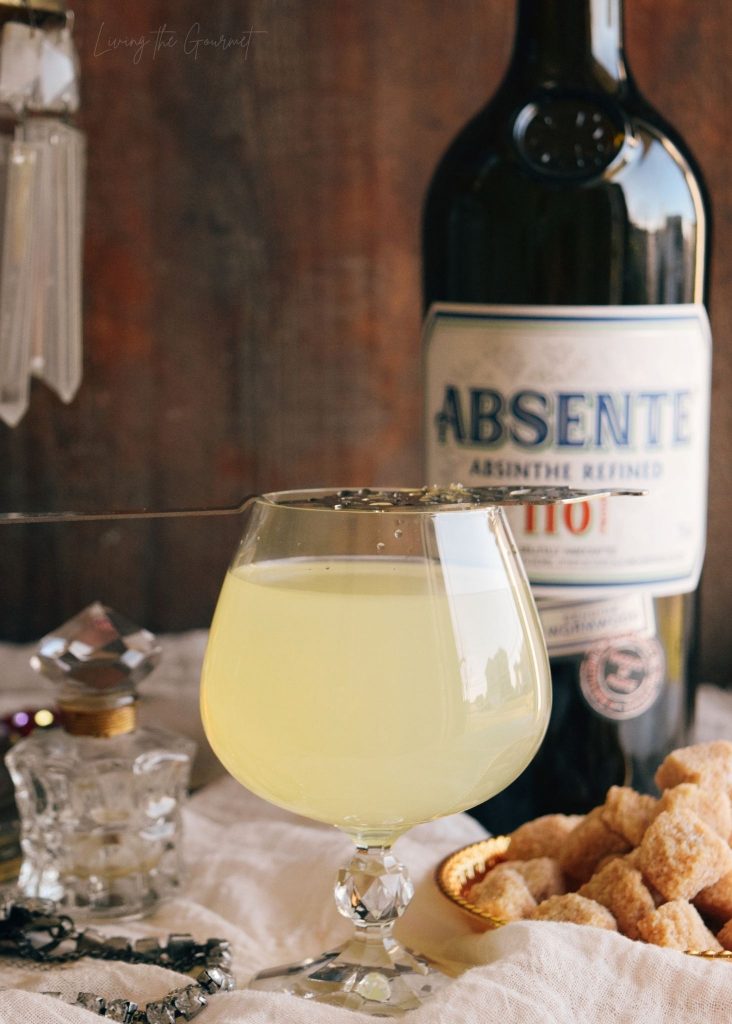
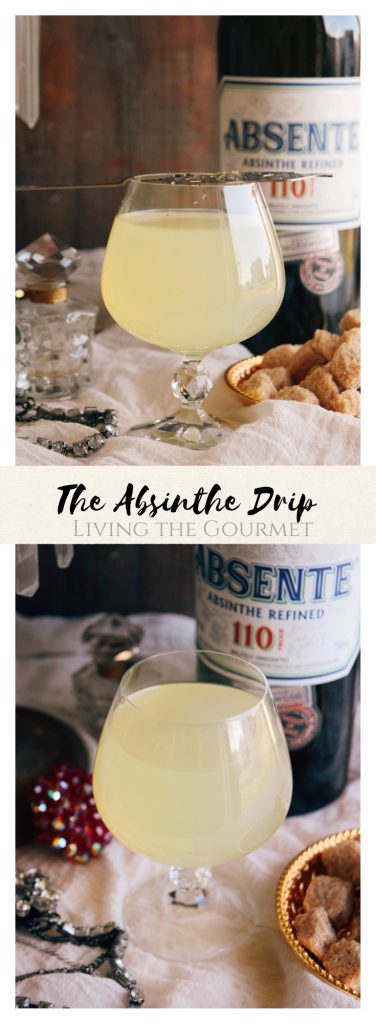
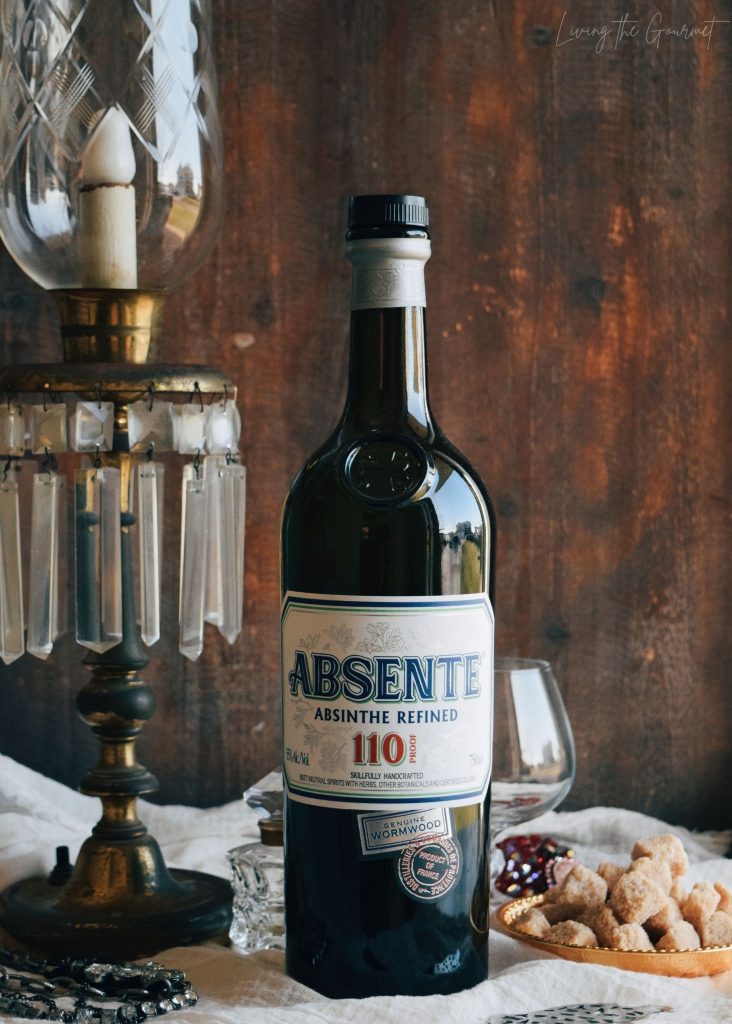
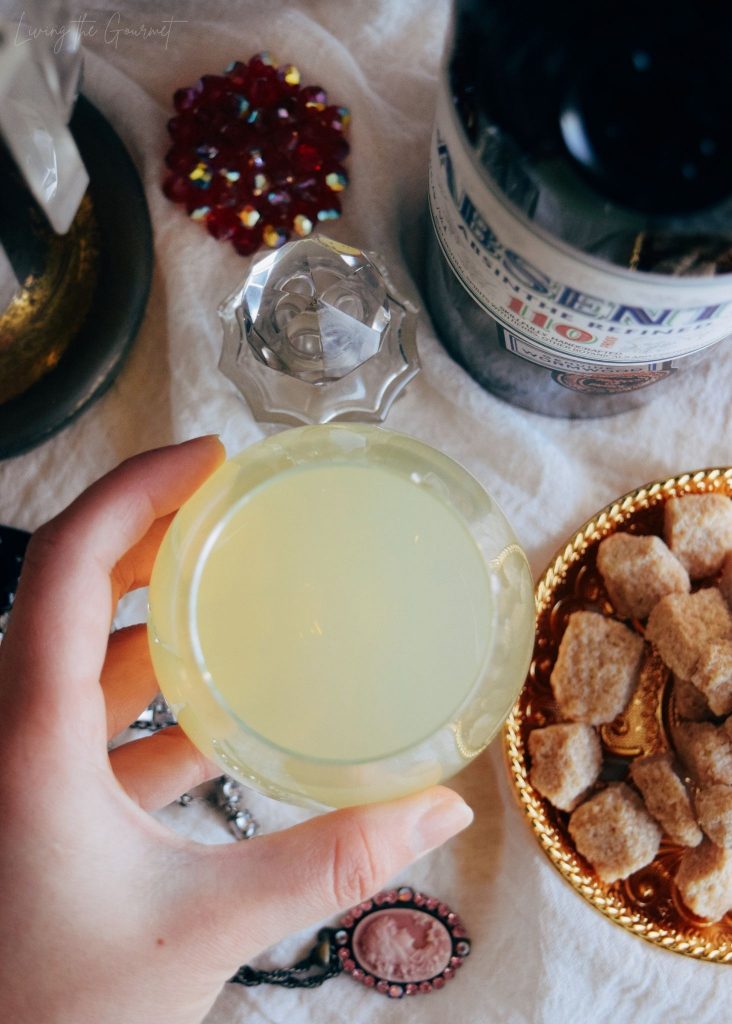
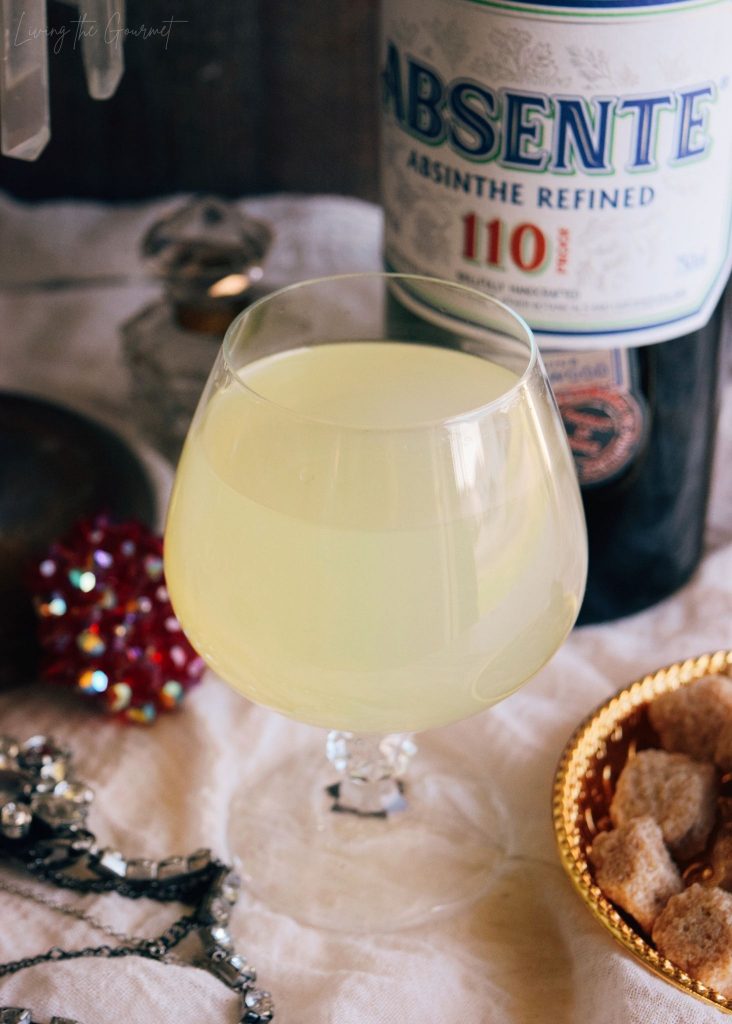
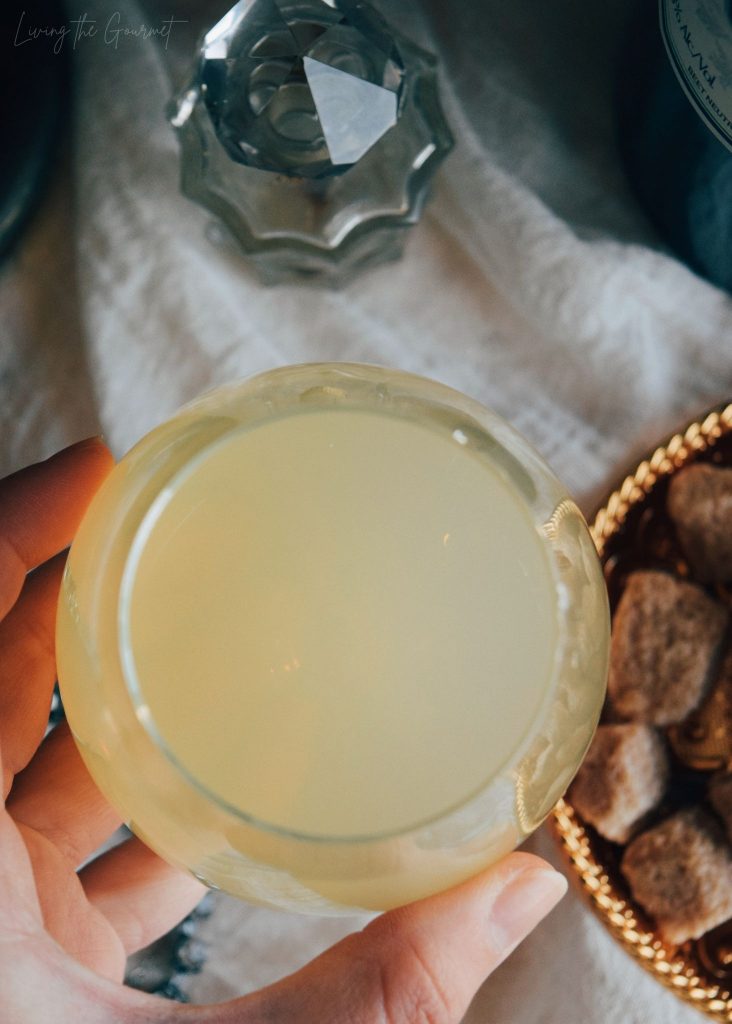

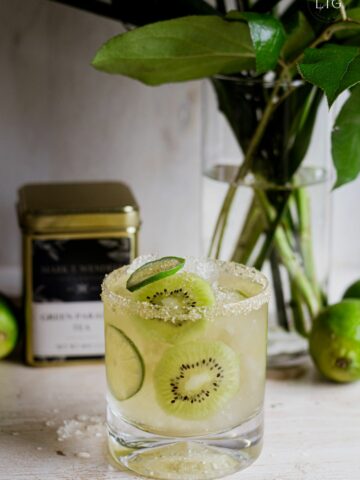
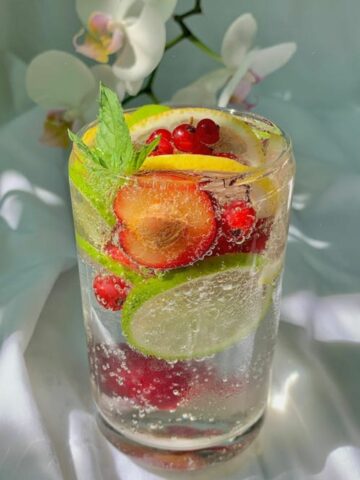
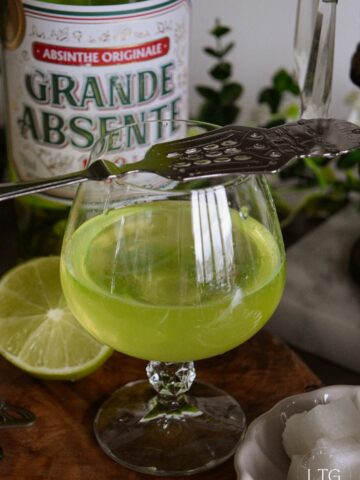
Becky, Cuddle Fairy says
Wow, I never tried Absente but have heard tales of it. I like the green fairy recipe.
Heather says
Sounds like a simple enough cocktail. I don't think I've ever tried absinthe before.
Samantha Donnelly says
I have never tried this before, but having it poured over a sugar cube makes it sound much nicer to me
karen says
I've heard a lot about Absinthe but I never actually tasted it. I hear it is very strong. I would love to taste the cocktail.
Who Let the Mum Out? says
This recipe sounds so lovely! I love a good absinthe. It's so strong and tastes delicious. I'm going to make this recipe for our next game night!
Laura says
I have never heard of this drink before. It does sound intriguing though.
Yeah Lifestyle says
Thanks for sharing the backstory, I have heard a lot about absinthe but never sampled it before. I think it would blow my head off!
Samantha Donnelly says
My parents would love this, I am not a huge fan of aniseed so probably would not enjoy it
Lavanda Michelle says
The post provides a detailed guide on how to prepare an absinthe drip, including the necessary tools and ingredients.
Beth says
I like the traditional preparation of absinthe where you slowly drip water over a sugar cube and into the spirit, and it becomes cloudy.
Marie Cris Angeles says
Wow! Never heard about this Absente. Looks like me and my cousins will switch to this. Thanks for sharing this with us.
Nadalie says
I dont think i have ever tried Absinthe. Looks like a lot of great artists are tied to it.
Monidipa Dutta says
I found your review of Absente and the history of absinthe fascinating. It was interesting to learn about the origins and popularity of absinthe, as well as the misconceptions surrounding it. The description of the taste and aroma of Absente was enticing, and I appreciated the cocktail recommendations for enjoying the spirit. Overall, a well-written and informative review. Cheers!
Rosey says
I didn't even realize you could get Absinthe in the USA. We saw it on menus everywhere in Prague and I don't even drink and I tried it, lol. The novelty was too hard to resist. 🙂
Zab Zaria says
Looks like a great brand! My brother will surely love this